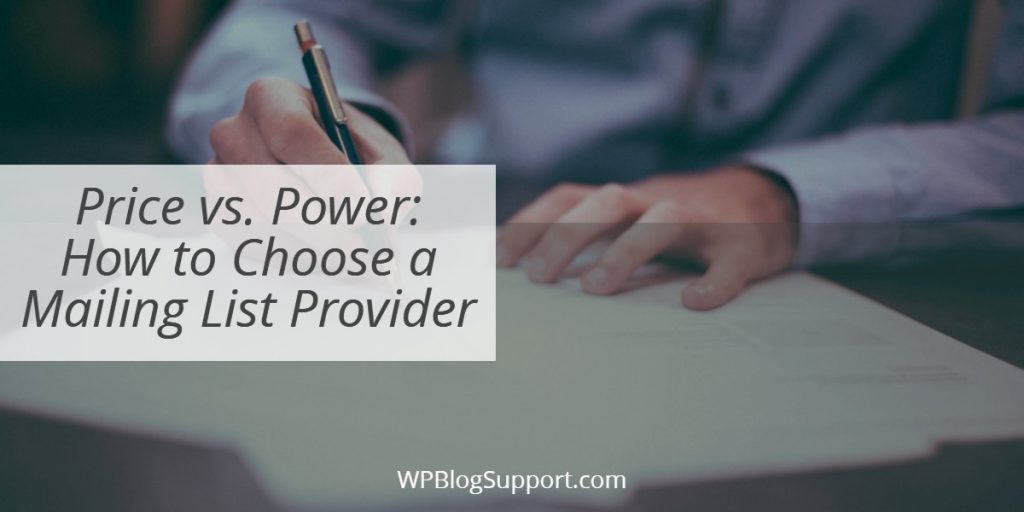Aside from time and location freedom, the biggest benefit to starting an online business is the lack of start-up capital required. You don’t have to buy inventory to stock a store. You don’t have to spend a lot on equipment. And you don’t have to shell out cash for employees and insurance and all those other costs associated with offline businesses.
But that low-cost mentality can cause you to lose sight of the bigger picture, too.
While it is possible to start a business without spending any money at all, it’s truly not a good idea. That free hosting account will no doubt have downtime issues (not to mention the ads they’ll serve up to your visitors). Free word processors will have compatibility issues with other, more common solutions. Free WordPress themes and plugins can have support issues.
So while bootstrapping is a good thing, making business decisions based solely on cost is not. And nowhere is that more true than when it comes to choosing an email list manager.
Deliverability Issues
Here’s the biggest problem we see with low-cost providers, including those you install and manage yourself: deliverability. Email services such as Yahoo, Gmail, and others vigorously defend their users’ accounts against spam, and will often mark your legitimate email as spam, simply based on the IP address it originates from.
Large email list providers have the resources to fight these false spam reports and keep their deliverability rates high. That’s what their users pay for. But when you choose a free or low-cost provider (or manage your own server), this might not happen. Over time, you’ll see your deliverability rates plummet.
Limited Features
Deliverability aside, many low-priced providers can afford to charge lower rates because they limit the features. For example, you might only be able to collect 500 addresses, or you may only be able to send a few emails each month. Even worse, you may not be able to segment your list or automate your emails.
Before you make the choice to use a low-priced or free email provider, be sure you fully understand the limitations of the account. While some concessions might be okay with you, others might put a serious crimp in your business-building efforts.
Finally, keep in mind that changing providers later (when you’re “ready”) can be a huge undertaking. You’ll have multiple landing pages and opt-in forms to edit, connections with your shopping cart, webinar host, social media accounts, and countless other integrations to deal with. And you’ll have a list of names to import to your new provider, many of which will either opt-out or be undeliverable at your new host.
Rather than go through all that trouble, the better option is to choose the right provider from the start, and if cost is an issue, create a plan to cover the expense instead of settling for the wrong service.

